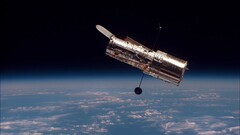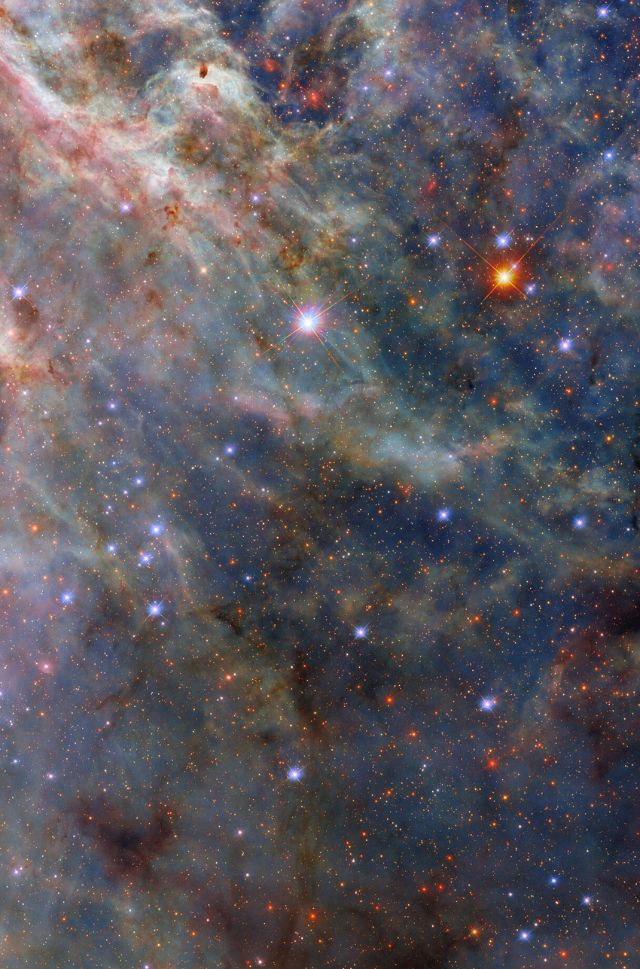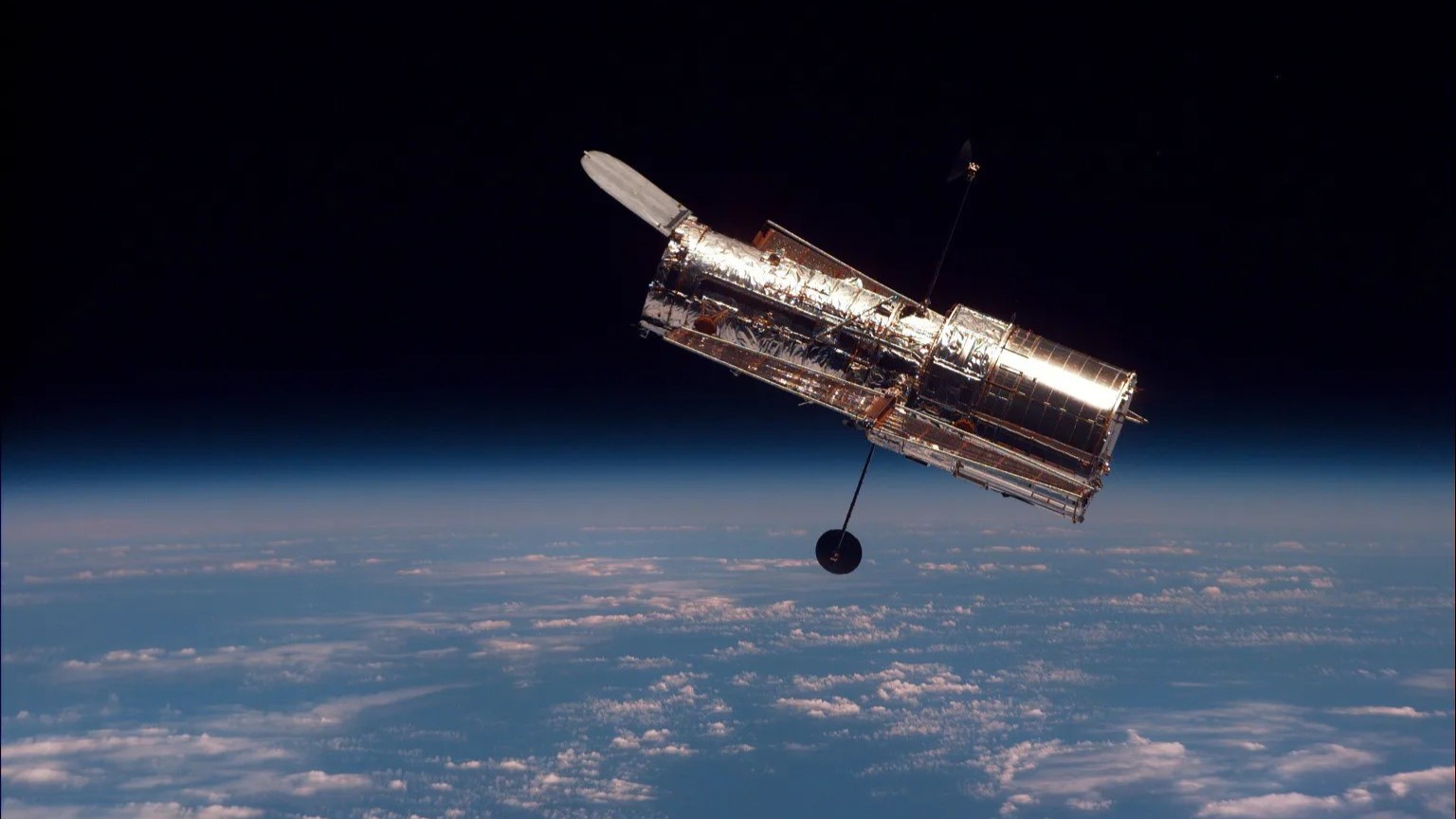 The Hubble Space Telescope in space (Image source: NASA)
The Hubble Space Telescope in space (Image source: NASA)
The NASA/ESA Hubble Space Telescope has captured a detailed image of the Tarantula Nebula, revealing intricate structures within the stellar nursery’s dusty clouds. The image has been chosen as the Hubble Picture of the Week.
Since Hubble’s launch in 1990, the Tarantula Nebula has been one of its frequent targets. This time, Hubble has zoomed in on a location close to a rare type of star within the nebula, known as a Wolf-Rayet star.
Wolf-Rayet stars are massive stars — about 200 times the mass of our Sun and at an advanced stage of stellar evolution. These extremely hot and luminous stars have lost their outer shell of hydrogen, generating dense and powerful stellar winds.
The Tarantula Nebula is located in the Large Magellanic Cloud, a dwarf galaxy located about 160,000 light-years away from Earth, in the constellations Dorado and Mensa. The Large Magellanic Cloud is a satellite galaxy of the Milky Way — the largest of the dozens of small galaxies orbiting our galaxy.
This galaxy is known to have several star-forming regions, but the Tarantula is its largest and brightest. The Tarantula Nebula also boasts being the largest and brightest star-forming region in the entire group of nearby galaxies, to which the Milky Way belongs.
This image of the Tarantula Nebula was created from data gathered from Scylla — an observing program. The program complements another Hubble observing program called ULLYSSES (Ultraviolet Legacy Library of Young Stars as Essential Standards). While ULLYSSES focuses on giant young stars in the Small and Large Magellanic Clouds, Scylla explores the surrounding interstellar medium.
 A detailed image of the Tarantula Nebula (Image source: NASA, ESA, C. Murray)
A detailed image of the Tarantula Nebula (Image source: NASA, ESA, C. Murray) Chibuike Okpara – Tech Writer – 98 articles published on Notebookcheck since 2024
Chibuike Okpara – Tech Writer – 98 articles published on Notebookcheck since 2024
I have always been fascinated by technology and digital devices my entire life and even got addicted to it. I have always marveled at the intricacy of even the simplest digital devices and systems around us. I have been writing and publishing articles online for about 6 years now, just about a year ago, I found myself lost in the marvel of smartphones and laptops we have in our hands every day. I developed a passion for learning about new devices and technologies that come with them and at some point, I asked myself, “Why not get into writing tech articles?” It is useless to say I followed up the idea — it is evident. I am an open-minded individual who derives an infinite amount of joy from researching and discovering new information, I believe there is so much to learn and such a short life to live, so I put my time to good use — learning new things. I am a ‘bookworm’ of the internet and digital devices. When I am not writing, you will find me on my devices still, I do explore and admire the beauty of nature and creatures. I am a fast learner and quickly adapt to changes, always looking forward to new adventures.

